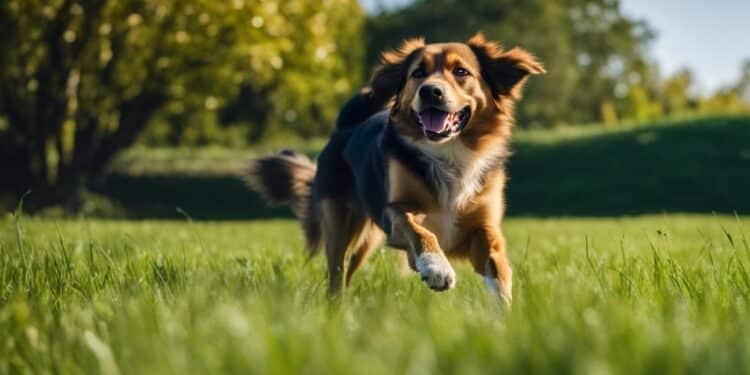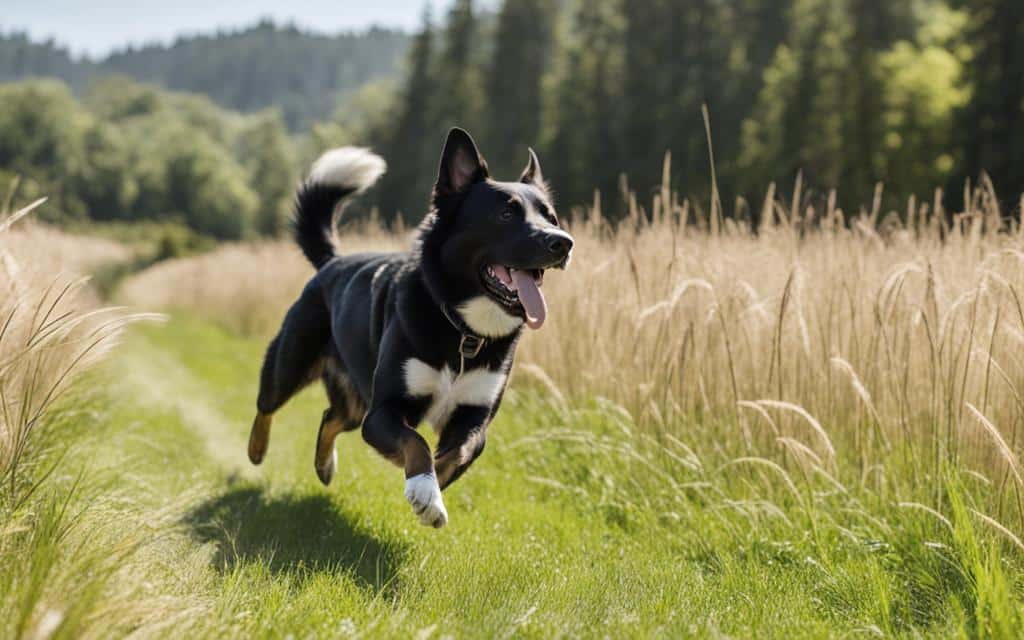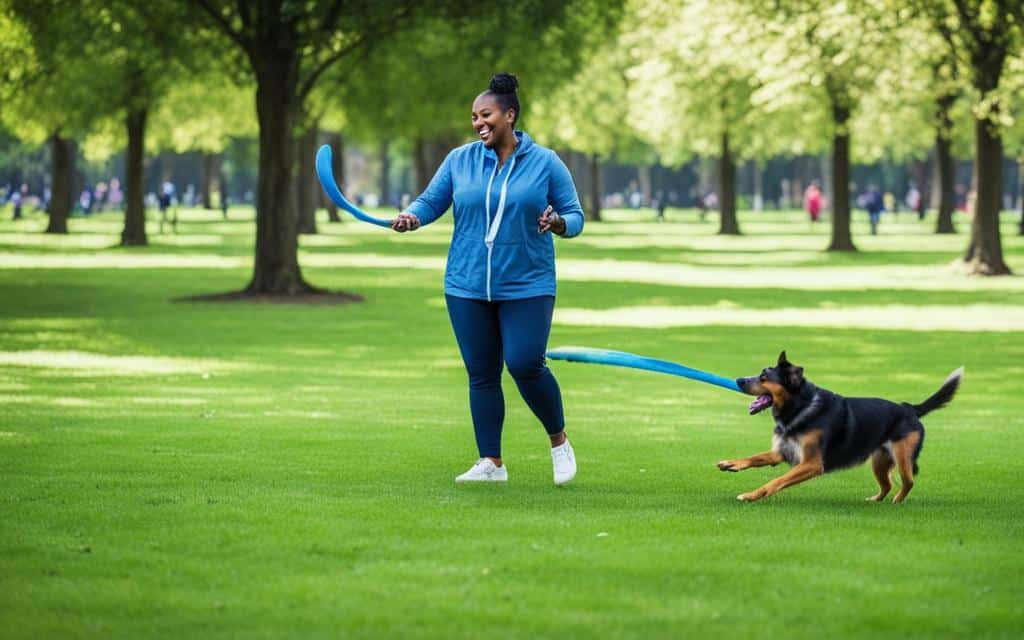Teaching Your Dog Reliable Recall Commands

Recall training is an essential skill for all dogs. It involves teaching your dog to respond to the command “come” or a similar verbal cue consistently and reliably. Having a reliable recall is crucial for ensuring your dog’s safety and allowing them to enjoy off-leash activities.
By training your dog to come when called, you can prevent accidents and potential dangers, such as running into traffic or approaching unfamiliar animals. Recall training is especially important for off-leash play and in emergency situations.
It can be challenging to achieve a reliable recall, but with proper training and consistency, it is possible to teach your dog this lifesaving skill.
Throughout this article, we will explore the key aspects of recall training, including what reliable recall means, how to train your dog effectively, common challenges to watch out for, and alternative options to off-leash play to ensure your dog’s safety and enjoyment.
What Is Reliable Recall?
“Reliable recall” refers to the ability of a dog to consistently and enthusiastically respond to the command to come. While it is impossible to guarantee that a dog will always listen to the recall cue, reliable recall means that the dog has been trained to respond as consistently as possible. It is a crucial skill, especially in situations where your dog needs to be off-leash. Reliable recall can be achieved through positive reinforcement training methods, where the dog learns that coming to you is rewarding and enjoyable. The goal is to make being near you the most fun thing for your dog and to reinforce the behavior with rewards.
Training Recalls
Training recalls involves making the training process fun and engaging for your dog. It is recommended to start training in a low-distraction environment, such as inside your house, and gradually increase the difficulty as your dog becomes more comfortable and responsive.
To begin, use a high-value treat or a favorite toy to get your dog’s attention and praise them as they come towards you. Gradually introduce a verbal cue, such as “come” or “here”, when your dog is already moving towards you. It is important to only add the cue when you are confident that your dog will respond.
You can also incorporate recall games, such as “Catch Me” and “Find Me”, to make the training process more enjoyable for both you and your dog.
Remember, consistency is key in training your dog’s recall skills. Practice regularly and reinforce the behavior with rewards to strengthen the desired response. By building a positive association with the recall cue, your dog will become more reliable in their response over time.
Recall Training Tips:
- Use high-value treats or toys as rewards to motivate your dog.
- Start training in a low-distraction environment and gradually increase the difficulty.
- Be patient and consistent in your training sessions.
- Reinforce the desired behavior with praise and rewards.
- Keep training sessions short and frequent for better retention.
- Avoid using punishment or negative reinforcement, as it can create confusion and anxiety in your dog.
| Training Tips | Benefits |
|---|---|
| Use positive reinforcement | Creates a positive association |
| Start in a low-distraction environment | Builds a solid foundation |
| Incorporate recall games | Makes training enjoyable |
| Be patient and consistent | Increases training success |
Poisoning the Cue
In the process of recall training, it is crucial to watch out for the phenomenon known as “poisoning the cue.” This occurs when the recall cue, such as the word “come,” loses its effectiveness or develops a negative association for the dog. It can happen unintentionally when the cue is repeated too many times without the dog responding. This repetition leads to an unclear meaning and a weakened response from the dog.
When a recall cue is poisoned, it becomes difficult for the dog to understand and respond appropriately. The negative association may stem from the frustration of the owner or the dog’s confusion caused by inconsistent training. Whatever the reason, it is essential to address the poisoned cue to ensure effective recall training.
To prevent further confusion or negative associations, it is recommended to change the recall cue to something new. Replace the original cue with a different word or phrase that has not been overused and does not carry any negative connotations. For example, if the previous cue was “come,” consider using alternatives like “here” or “close.”
By introducing a fresh recall cue, you can reset the dog’s understanding and create a positive association. However, it’s important to go back to the basics and reintroduce the new recall cue gradually. Start by associating the new cue with positive experiences and rewards, reinforcing the behavior you want to achieve from your dog.
Ultimately, addressing a poisoned cue requires patience, consistency, and a clear understanding of each dog’s individual learning abilities. By taking the necessary steps to change the recall cue and reintroduce it positively, you can strengthen your dog’s response and improve their recall training.
“Poisoning the cue” occurs when the recall cue loses its effectiveness or has a negative association for the dog.
Recall Training Tips
Here are some important tips for successful recall training:
- Be consistent: Consistency is key when it comes to recall training. Use the same command word or cue every time you want your dog to come to you. This will help your dog associate the command with the desired behavior.
- Start in a controlled environment: Begin recall training in a quiet and familiar area with minimal distractions. This will allow your dog to focus on learning the command without being overwhelmed.
- Use rewards: Positive reinforcement is an effective way to motivate your dog during recall training. Reward your dog with treats, praise, or playtime whenever they come to you when called. This will reinforce the behavior and make your dog more likely to respond in the future.
- Avoid punishment: Punishment or negative reinforcement can create fear or anxiety in your dog, making them less likely to come when called. Instead, focus on positive reinforcement and rewards to encourage the desired behavior.
- Gradually increase distractions: Once your dog becomes reliable in a controlled environment, gradually introduce distractions during training sessions. Start with mild distractions and gradually work your way up to more challenging situations. This will help your dog generalize the recall command and respond even in the presence of distractions.
“Consistency is key when it comes to recall training.”
Remember, recall training takes time and patience. Practice regularly and be patient with your dog as they learn. With consistency, positive reinforcement, and gradual exposure to distractions, you can teach your dog a reliable recall command.

| Tips | Recall Training | Rewards | Punishment |
|---|---|---|---|
| Be consistent | Start in a controlled environment | Use rewards | Avoid punishment |
| Gradually increase distractions |
Alternatives to Off-Leash Play
If you are not confident in your dog’s recall and safety off-leash, there are alternatives to consider. Keeping your dog on a leash or using a long leash can provide them with more freedom to explore while still ensuring their safety. Fenced areas, such as dog parks or your own yard, can also be used to allow your dog to play and exercise in a controlled environment. It is essential to respect local leash laws and regulations in all areas, including your front yard and public parks. These alternatives can still provide your dog with opportunities for play and exploration while minimizing the risks associated with unreliable recall.

If you are not confident in your dog’s recall and safety off-leash, there are alternatives to consider. Keeping your dog on a leash or using a long leash can provide them with more freedom to explore while still ensuring their safety. Fenced areas, such as dog parks or your own yard, can also be used to allow your dog to play and exercise in a controlled environment. It is essential to respect local leash laws and regulations in all areas, including your front yard and public parks. These alternatives can still provide your dog with opportunities for play and exploration while minimizing the risks associated with unreliable recall.
| Alternatives to Off-Leash Play | Advantages | Disadvantages |
|---|---|---|
| Leash Walking | – Provides control and safety – Allows you to guide your dog’s movements – Improves leash manners |
– Restricts freedom for exploration – Requires constant supervision – Limits opportunities for off-leash play |
| Long Leash | – Offers more freedom to explore – Allows for supervised off-leash play – Provides control at a distance |
– Requires training and practice – May get tangled or drag on the ground – Less control than a regular leash |
| Fenced Areas | – Provides a safe and controlled environment – Allows for off-leash play – Socialization opportunities with other dogs |
– Requires access to a fenced area – Limited to the size and availability of the space – May not be available in all areas |
Note: Remember to consult with a professional trainer or behaviorist to determine the best option for your specific dog and training goals.
Conclusion
Recall training is an essential skill for all dogs, ensuring their safety and allowing them to enjoy off-leash activities. By training your dog to respond reliably to the recall command, you can prevent accidents and potential dangers.
It is important to make recall training a positive and rewarding experience for your dog through consistent practice, positive reinforcement, and fun games. Remember to avoid poisoning the cue by repeating it too many times without response.
Additionally, if you are not confident in your dog’s recall, there are alternatives to off-leash play, such as keeping them on a leash or using a long leash. With proper training, patience, and consistency, you can teach your dog a reliable recall and provide them with the freedom to enjoy off-leash activities safely.
FAQ
Why is recall training important for dogs?
Recall training is important for dogs because it ensures their safety and allows them to enjoy off-leash activities. It teaches dogs to respond consistently to the command “come” or a similar cue, preventing accidents and potential dangers.
What does “reliable recall” mean?
“Reliable recall” refers to a dog’s ability to consistently and enthusiastically respond to the command to come. It is achieved through positive reinforcement training methods, where the dog learns that coming to the owner is rewarding and enjoyable.
How can I train my dog to come when called?
To train your dog to come when called, start in a low-distraction environment and use high-value treats or favorite toys to get their attention. Gradually introduce a verbal cue when your dog is already moving towards you, and reinforce the behavior with rewards.
What does “poisoning the cue” mean?
“Poisoning the cue” refers to a situation where the recall cue has lost its effectiveness or has a negative association for the dog. If this occurs, it is best to change the recall cue to prevent further confusion or negative associations.
Are there any tips for successful recall training?
Yes, here are some important tips for successful recall training: make the training process fun and engaging, start in a low-distraction environment, use positive reinforcement, and incorporate recall games to make it enjoyable for both you and your dog.
What are some alternatives to off-leash play?
If you are not confident in your dog’s recall, alternatives to off-leash play include keeping them on a leash or using a long leash. Fenced areas like dog parks or your own yard can also provide a controlled environment for play and exercise.
How does recall training ensure off-leash safety?
Recall training ensures off-leash safety by teaching dogs to come when called, preventing them from running into traffic or approaching unfamiliar animals. It allows for controlled off-leash play and provides a reliable way to bring your dog back in emergency situations.





